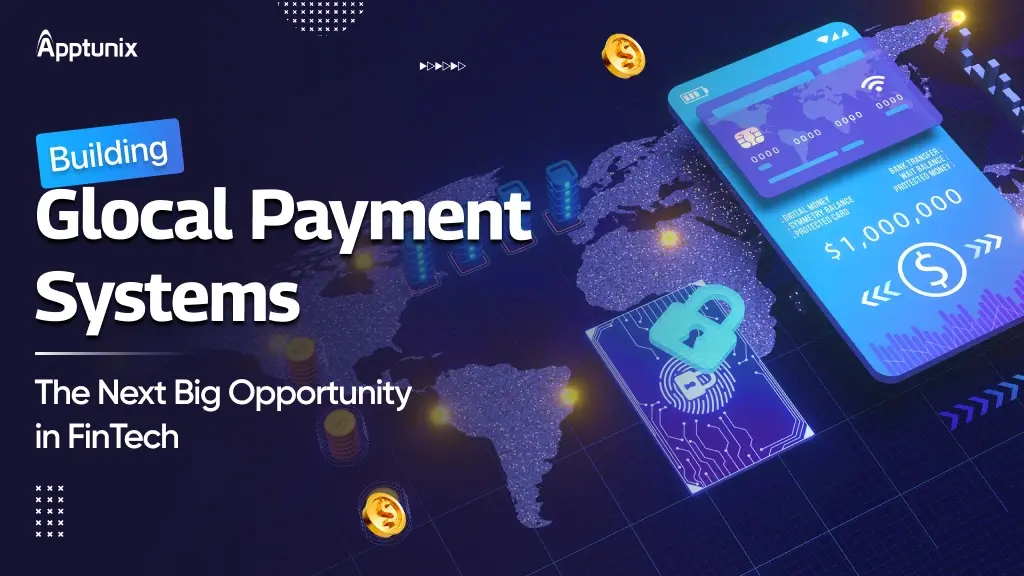
Building Glocal Payment Systems: The Next Big Opportunity in FinTech
18 Views 15 min November 27, 2025

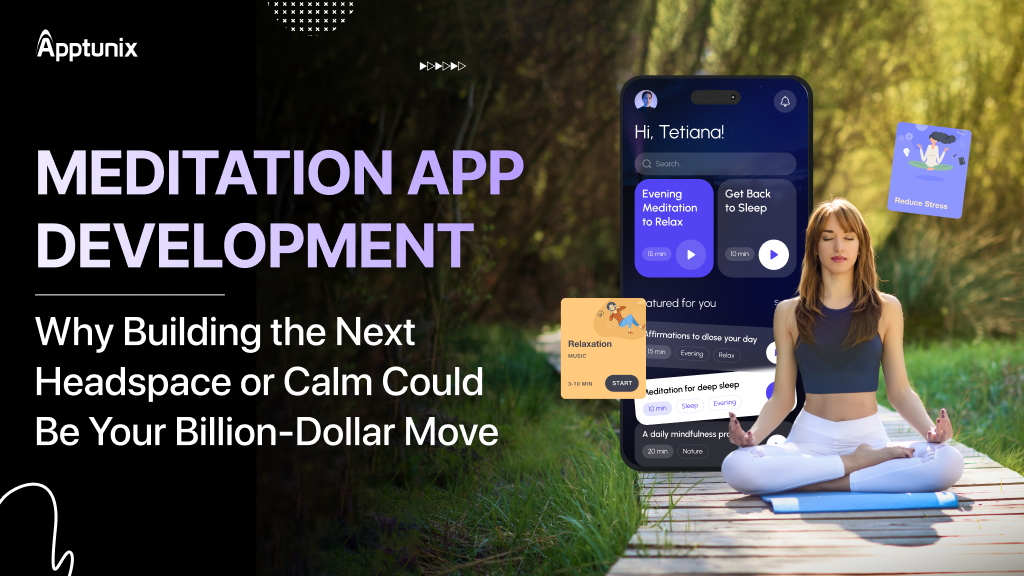
Between endless notifications, remote work fatigue, and burnout that never seems to end, people are looking for ways to slow down and breathe again. Over the past few years, meditation app development has moved from yoga studios and mindfulness retreats to something you can access anytime on your phone.
Mental peace has become the new luxury everyone’s chasing.
Companies are offering mindfulness subscriptions to employees, schools are introducing guided sessions for students, and fitness brands are embedding meditation features into their platforms. The global meditation app market is projected to cross $7 billion by 2028, and science-backed content will lead the next growth wave.
For founders and entrepreneurs, the opportunity to build a meditation app has never been more scalable. The demand is high, user retention is strong, and the emotional value these apps have become habits.
At its simplest, a meditation app helps people manage stress, anxiety, and sleep through guided sessions, calming sounds, and mindfulness exercises. But the best ones go far beyond that.
When you open a meditation app, it feels like the app already “knows” you. You might get a calm greeting, a short breathing exercise, or a tailored meditation plan based on your mood or stress level. That’s where AI-driven wellness technology comes in helping personalize every user’s experience. Here’s what typically happens behind the scenes:
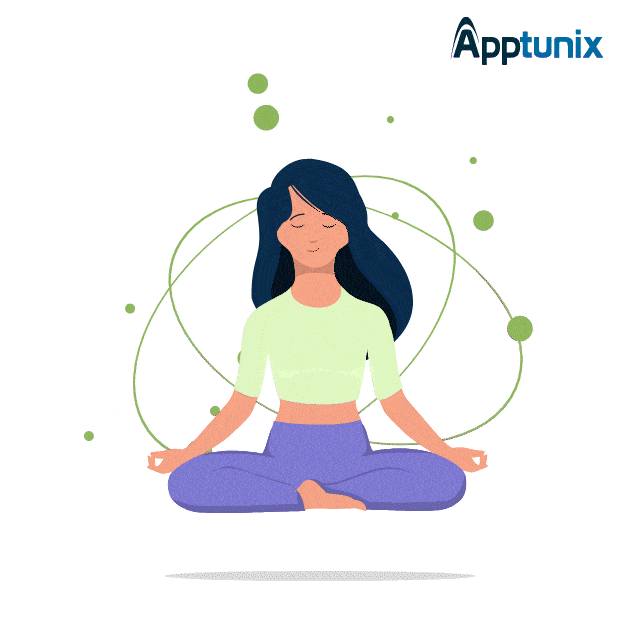
Smart onboarding: Users answer a few simple questions about how they’re feeling or what they want to work on: better focus, stress relief, or sleep.
Curated sessions: The app uses that data to recommend guided meditations, soundscapes, or breathing practices that fit their goals.
Progress tracking: Users can check their streaks, total minutes meditated, or even their mood trends over time.
Mindful nudges: Subtle notifications remind them to take a mindful minute during a busy day.
If you’re planning to develop a meditation app, your goal should be to simply build something that feels personal, effortless, and emotionally supportive. The more human it feels, the stronger the connection users build with it. As mental wellness continues to merge with digital innovation, learning how to develop a fitness app is more than a business idea — it’s a step into the future of preventive mental health and emotional care.
Everyone’s looking for peace of mind these days. That’s exactly why meditation and wellness apps are booming. The global mindfulness app market is growing faster than most tech categories, with analysts projecting it to reach over $2.5 billion by 2032.
More than half of Gen Z users now say they use at least one meditation or wellness app every week. Big employers are also jumping in, adding mental health app development to their corporate wellness plans to reduce burnout and improve productivity. This shift is creating massive opportunities for anyone ready to build a meditation app like Headspace or Calm.
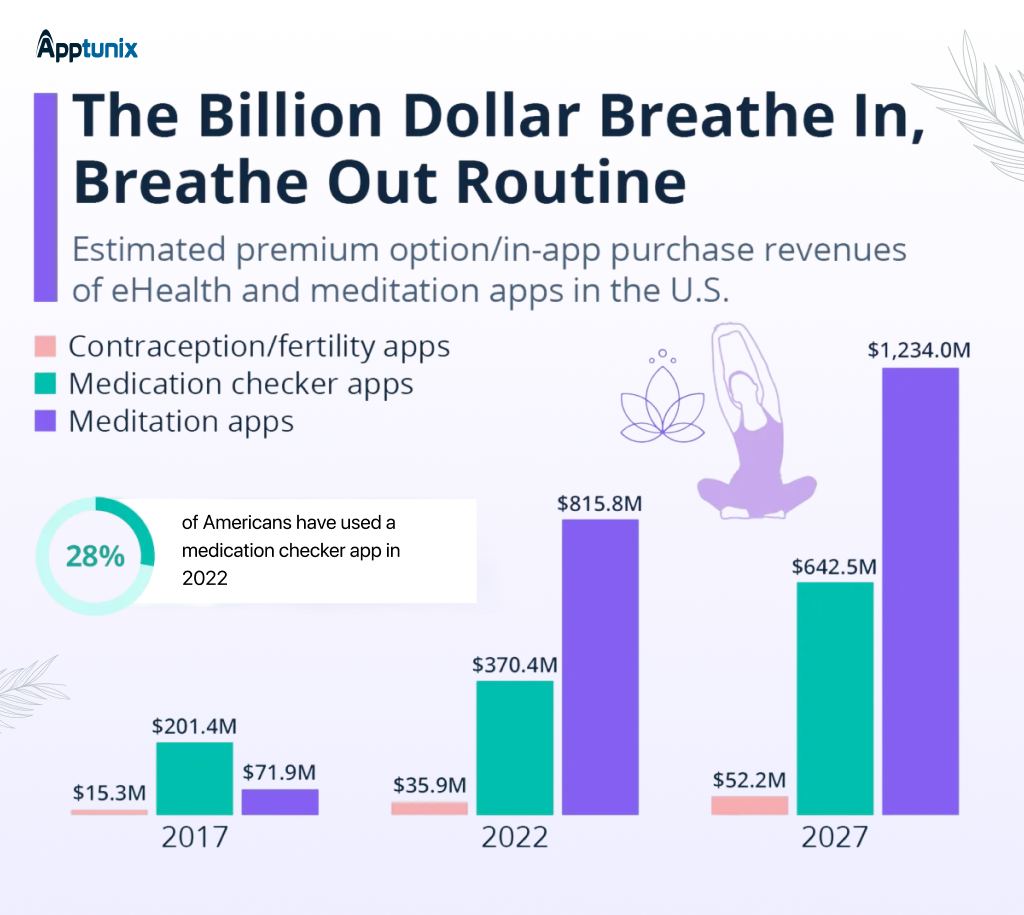
And here’s the interesting part: even though the market looks crowded, users are still asking for something more. They want meditation apps that actually feel personal, that fit their culture, and that use smart AI mood tracking. In short, the world doesn’t need another generic relaxation app. It needs experiences that feel human.
The smartest mindfulness app monetization model is the one that grows with your audience. Start simple with subscriptions or freemium, then evolve into data-driven personalization, partnerships, and hybrid programs.
If you’re planning to develop a yoga and meditation app or an AI-powered wellness platform, the opportunity is ripe. The global meditation app market is expected to cross $10 billion by 2027, with millions of daily active users using these apps to manage stress, improve focus, and sleep better. The audience is growing, investors are paying attention, and people are literally searching for new ways to find calm in the chaos.
The next breakout app in this space is waiting to be built…!!!

Two apps turned mindfulness into a billion-dollar business: Headspace and Calm. And their stories are worth studying.
Headspace started with a simple idea to make meditation accessible to anyone, anywhere. It now serves users in over 190 countries and has grown into a company valued at more than $3 billion. The Headspace business model is smart and scalable. It hooks users with free guided sessions, then converts them into paying members through structured courses, progress tracking, and wellness programs for teams and corporations.
Calm took a slightly different route. Instead of just meditation, it built an emotional lifestyle brand around relaxation. The Calm app business model is built on storytelling and sound. Sleep stories voiced by celebrities, nature soundscapes, and mindfulness programs helped it attract millions of paying users and a valuation of over $2 billion.
So what can new founders learn from them?
If you want to develop a meditation app that stands out, start where they left off. Focus on personalization, AI-based mindfulness tracking, and community-driven growth. The market still has room for a new player that feels fresh, authentic, and emotionally relevant.
Headspace and Calm proved what’s possible. The next big wellness brand could be yours.
If there’s one thing the success of Calm and Headspace has taught us, it’s this: mindfulness may be free, but convenience and personalization are worth paying for.
The meditation app business model is built around user consistency. People who meditate daily are far more likely to pay for features that make their experience smoother, more personal, and scientifically backed.
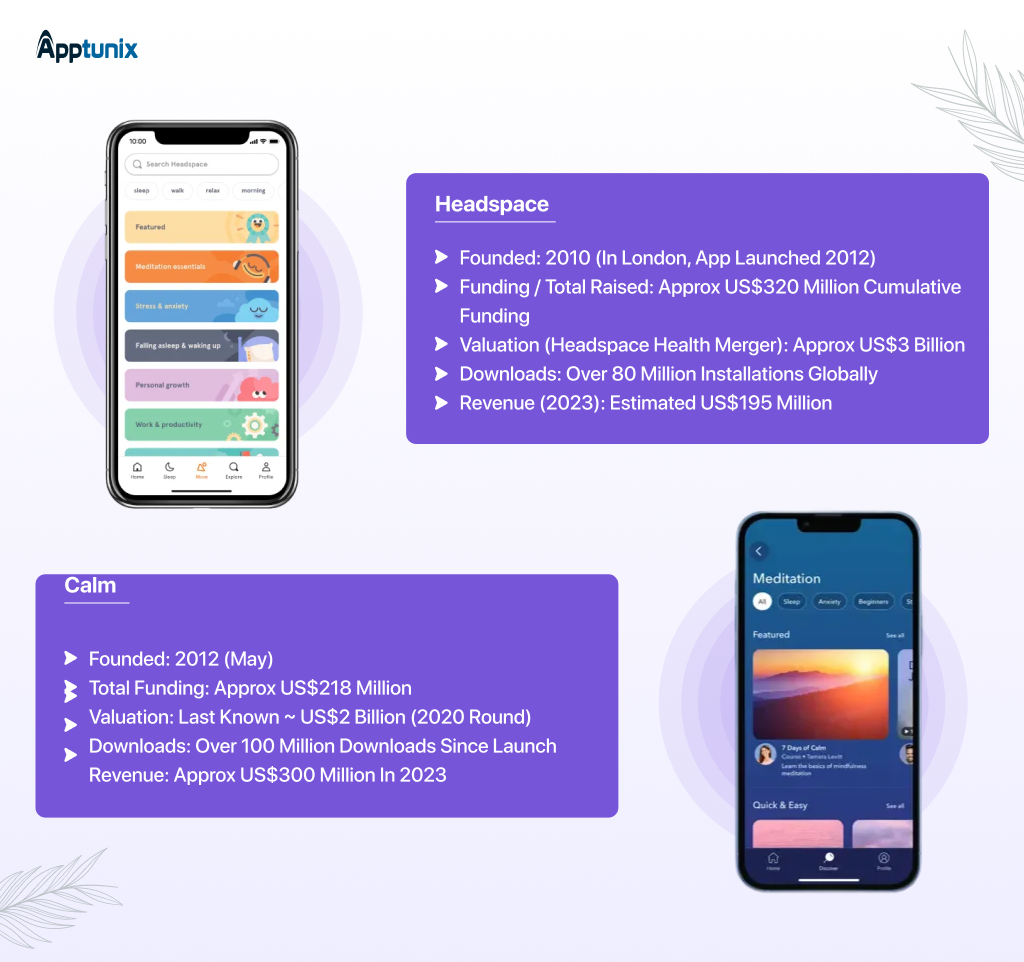
Let’s break down how leading apps turned that psychology into billion-dollar businesses.
The Calm business model is based on a freemium model, with a strong focus on premium content and emotional branding. Users can access a few sessions for free, but the real magic lies behind the paywall. Celebrity-narrated sleep stories from Matthew McConaughey, original music by Moby, and guided programs from psychologists.
This content-first approach works. Calm reportedly generates over $200 million in annual revenue, with more than 4 million paying subscribers. Their strength isn’t just in offering meditation tracks — it’s in building a holistic mental wellness ecosystem that includes sleep, stress relief, and emotional growth.
The Headspace business model combines B2C and B2B monetization, which helped it stand out. On one hand, individual users can pay for guided sessions and mindfulness journeys. Headspace for Work partners with global organizations like Starbucks, Google, and Adobe to offer employee wellness programs.
This corporate wellness integration has been a game-changer. Studies show that companies using Headspace see a 32% reduction in employee stress levels, translating into real productivity gains. For Headspace, this means recurring enterprise revenue and long-term brand credibility.
Both models tap into human emotion and habit. When users see progress, they stay, and when they stay, they pay. That’s why startups looking to create a meditation app like Headspace or launch a meditation app like Calm should focus on two things: personalization and retention.
AI and machine learning now play a huge role in this. Modern AI meditation app development enables hyper-personalized recommendations — daily sessions based on stress levels, mood, and even sleep data from wearables. It’s how apps like Insight Timer and Aura are catching up to the giants.
So, when you think about your meditation app revenue model, build for habit, retention, and trust. That’s the formula that transforms meditation startups into global wellness brands.
Building an app is one thing. Making it profitable, that’s where smart strategy kicks in. Here’s how the top apps in the mindfulness space are monetizing their platforms while keeping users genuinely engaged.
1. Freemium to Premium ConversionThis is the gold standard of meditation app development. Apps offer a limited library for free to attract users, then upsell advanced features — AI-based mood tracking, exclusive meditations, sleep libraries, or progress analytics. For example, Headspace’s free tier includes just a few sessions, while the premium plan unlocks full courses and daily challenges. The conversion rate? Around 3–7%, which is above average in the wellness app category.
2. Subscription ModelsMost wellness app development companies recommend tiered pricing — monthly, annual, or lifetime. Calm’s annual plan at around $70 per year remains the most popular choice, striking a balance between affordability and long-term retention. Lifetime plans also work well for users who see meditation as a lifelong habit.
3. Corporate Wellness ProgramsThis is where serious revenue begins. The revenue from wellness app development skyrockets when brands tap into the B2B sector. Both Calm and Headspace now generate a large share of income through employer wellness programs. Companies pay to give their employees access to premium meditation tools is a win-win for morale and mental healthcare.
4. In-App Purchases and Add-OnsSome apps, like Balance or Ten Percent Happier, sell specialized packs — relationship meditations, focus boosters, or stress management sessions. These micro-transactions are subtle yet effective, adding another layer of monetization without depending solely on subscriptions.
5. Advertising and Brand CollaborationsAd-based monetization can work for apps targeting a large user base. However, the trend is shifting toward branded content partnerships — Calm, for instance, has collaborated with HBO and Kaiser Permanente for wellness campaigns.
6. Community-Driven ModelsSome newer apps are monetizing through live classes and community events — think virtual group meditations, therapy circles, or mindfulness retreats. These foster stronger user engagement and drive revenue through ticketed access.
How to Develop a Health and Fitness App [Detailed Guide + Cost]
A great meditation app isn’t just a playlist of calming sounds — it’s a personalized digital coach that helps users relax, refocus, and grow. If you’re planning meditation app development or want to create a meditation app like Calm, you need to think beyond the basics. The best apps in this space combine mindfulness science, psychology, and smart tech to make meditation feel effortless.
When you build a meditation app like Headspace, the goal isn’t just to replicate features but to create a calm, intuitive, and personalized experience. Every sound, color, and interaction should reflect serenity.
Here’s a quick breakdown of the essential features of a wellness and meditation app that users expect:
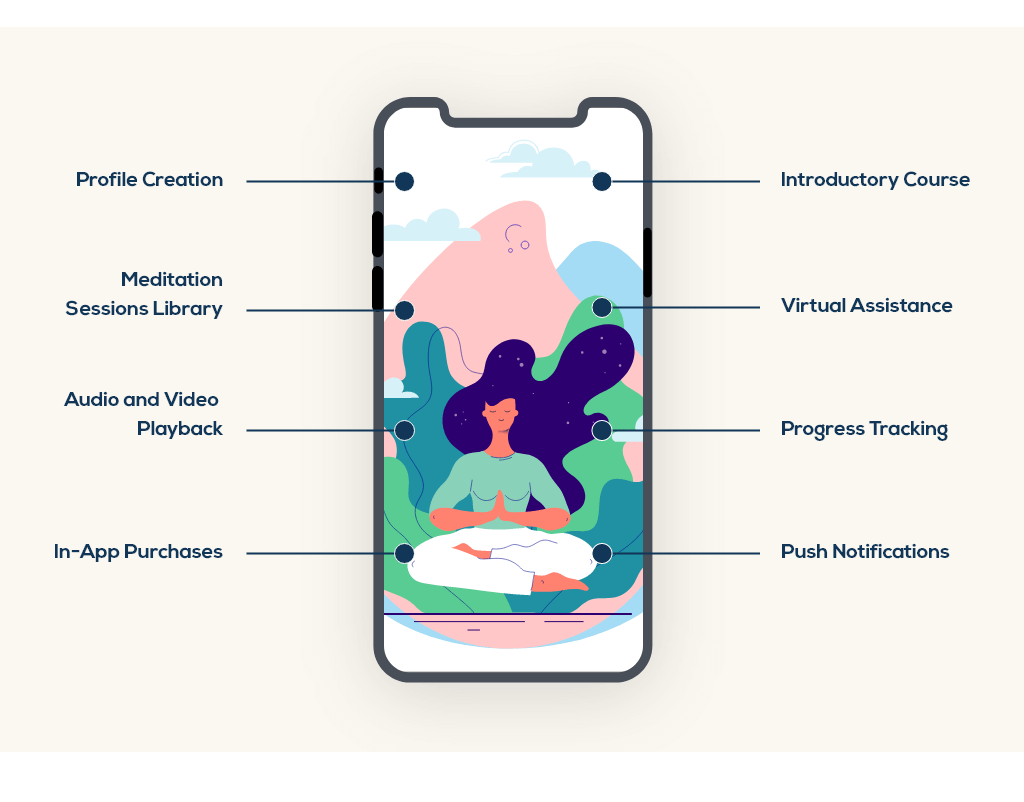
These are the heart of your app. Offer sessions designed for stress, focus, sleep, or anxiety — just like Calm and Headspace do. Partner with mindfulness coaches or voice artists to create soothing, high-quality content.
Users love seeing progress. Adding streaks, session histories, and badges can help motivate them to stay consistent with their mindfulness journey.
AI meditation app solutions make experiences deeply personal. AI can analyze user moods, preferences, and usage data to suggest the right meditation or breathing exercise at the right moment. Headspace, for instance, uses data-driven personalization to recommend specific sessions based on stress levels and time of day.
Modern AI meditation app developers integrate emotion recognition using voice or facial cues. The app can detect stress in a user’s tone and instantly suggest calming exercises — that’s personalization at another level.
Voice assistants make mindfulness more interactive. Users can say “Start a breathing session” or “Play my morning meditation,” and the app responds. This is where natural language processing (NLP) enhances the meditation experience.
Most successful meditation apps also include sleep stories, focus playlists, and ambient sounds. They extend user engagement beyond meditation into the wider wellness space.
Users often find comfort in shared mindfulness goals. A community space or group challenges can make your app more engaging and social.

Behind every calm interface is a strong, reliable tech stack. Choosing the right technologies early ensures your app performs smoothly, scales easily, and feels delightful to use. Here’s what goes into the Headspace app development roadmap and other top-tier mental health app development projects:
A. Frontend FrameworksFlutter or React Native: Both allow you to build for iOS and Android with a single codebase. Flutter provides fluid animations ideal for meditative visuals, while React Native offers excellent community support. Swift (for iOS) and Kotlin (for Android) if you prefer native app performance.
B. Backend Technologies C. AI and Personalization ToolsIntegrate TensorFlow, PyTorch, or Google Cloud AI to power emotion recognition, adaptive learning, and content recommendations. These AI meditation app solutions help the system understand what each user needs most — stress relief, better focus, or sleep.
D. Audio & Video StreamingUse APIs like Agora, Twilio, or Wowza for high-quality streaming of guided meditations or live wellness sessions.
E. UI/UX Design PrinciplesA meditation app must look and feel calm. Soft color palettes (blues, greens, neutrals), minimalist layouts, and intuitive navigation are key. Headspace and Calm both use white space strategically to reduce cognitive load. Color psychology also matters: blue for trust, green for balance, and soft gradients for emotional warmth. Include accessibility features like adjustable text size and dark mode.
F. Security and PrivacySince these apps handle sensitive wellness data, encryption and GDPR compliance are non-negotiable. Use secure authentication and data storage practices. When you partner with a wellness app development company like Apptunix, you get access to developers who understand both the tech and the psychology behind meditation. They ensure your app runs smoothly, looks elegant, and genuinely improves user wellbeing.
Building a wellness or meditation app that people actually use daily requires more than a nice design and relaxing music. It’s about strategy, emotional design, and consistent post-launch growth. Here’s a clear, actionable roadmap for developing a meditation app that shows how to go from idea to app store success.
Step 1: Market and Competitor ResearchBefore you start building, study what makes Calm and Headspace successful. Understand their tone, pricing, and user flow to identify the gaps. Look for niche opportunities like workplace mindfulness, AI-guided meditation, or youth-focused meditation routines. This step will define your USP and help position your app in a crowded market.
Step 2: Define Core Features and Target AudienceDecide what type of experience you want to offer. Will your app focus on guided sessions, sleep sounds, breathing exercises, or stress tracking? Your meditation app features list should reflect user goals and lifestyles. For instance, young professionals may prefer 5-minute stress breaks, while wellness enthusiasts might love streak tracking and AI mood insights.
Step 3: UI/UX Design and BrandingCalm, peaceful design is not a nice-to-have — it’s the product itself. In wellness app development, every animation, sound, and color should reduce anxiety and encourage relaxation. Keep it minimalist, intuitive, and mobile-friendly. Your branding should instantly convey calmness and trust.
Step 4: App Development and Tech IntegrationThis is where your chosen meditation app development company (like Apptunix) steps in. Develop the front-end with Flutter or React Native for cross-platform builds, and use backend frameworks like Node.js or Django for speed and scalability. AI meditation features like personalised suggestions or emotion recognition can be built using TensorFlow or Google Cloud AI APIs.
Step 5: Testing and Quality AssuranceTest every meditation session, audio stream, and push notification for smoothness. The last thing you want is lag during a relaxation session. Apptunix’s QA team runs functionality, usability, and stress tests to ensure the experience is distraction-free and emotionally engaging.
Step 6: Launch Strategy and ASOA great launch can make or break your app. Optimize your app store presence with keyword-rich titles, authentic screenshots, and a short, catchy video preview. This is App Store Optimization (ASO) 101. Collaborate with wellness influencers, mindfulness coaches, or yoga experts to build early buzz. You can also promote in wellness communities or forums where users already care about mindfulness habits.
Step 7: Post-Launch Growth and User RetentionLaunching is only the start. Keep adding fresh meditations, sleep sounds, or new mindfulness programs to retain users. Use push notifications thoughtfully — gentle nudges like “It’s time to unwind” or “Take a deep breath break” build daily engagement. Monitor analytics, update frequently, and respond to feedback. That’s how Headspace and Calm turned one-time users into loyal subscribers.
Let’s talk numbers — because every wellness startup or business investor wants to know what it really costs to bring this kind of product to life. The cost to develop a meditation app can vary widely depending on your goals, features, and development team’s expertise.
Here’s a realistic breakdown based on complexity and functionality:
Headspace reportedly raised over $250 million in funding, much of which went into content creation and platform scaling. Calm reached a valuation of over $2 billion thanks to its recurring subscription model and expansion into sleep, focus, and relaxation niches.
That’s the potential ROI of high-quality meditation app development done right. Apptunix can help you estimate accurate budgets, define a cost-efficient roadmap, and build your MVP faster without compromising on quality or user experience.
Real results speak louder than promises. Here are a few success stories from our wellness and fitness app portfolio that show what’s possible with the right strategy and execution. Each project had a different goal, but one thing remained constant: growth.
That’s what happens when expert strategy meets empathetic design.

MindEase – A Personalised Meditation & Sleep App
MindEase is a health & fitness app designed to help users manage stress, sleep better, and improve focus. A startup approached Apptunix with a vision: combine meditation and sleep therapy into a single product. The goal was to build a meditation app that felt like a wellness companion, not just an audio library.
Apptunix’s team worked closely with wellness experts to curate guided sessions, nature soundscapes, focus music, and breathing exercises tailored for stress relief and productivity. Using cross-platform development (iOS and Android) and streamlined backend systems, Apptunix delivered a platform capable of supporting audio streaming, user tracking, and personalized recommendations. The UI/UX was designed around minimal distractions: soothing visuals, intuitive navigation, and consistent daily prompts to build meditation habits.
Results
🧘♀️ 50K+ Downloads in the first 3 months
📈 40% Growth in daily active users
💰 4.8★ Rating and strong retention across both app stores
Building a meditation or wellness app that truly helps people unwind, focus, and feel better takes more than just good UI or fancy animations. It demands a deep understanding of human behavior, mindfulness, and scalable technology and that’s exactly what makes Apptunix the go-to partner for meditation app development.
For over 12 years, with a team of 250+ skilled developers, Apptunix has launched 2,000+ successful apps which now serve millions of users worldwide.
But what really sets our portfolio apart is our approach. We don’t just build meditation apps that look good — we build ones that people keep coming back to. Every feature, from soothing soundscapes to personalized meditation journeys, is designed to help users form lasting habits and build emotional connection with your product.
Whether you want to build a meditation app like Headspace, create an AI-powered Calm alternative, or launch a hybrid wellness platform that combines mindfulness, fitness, and sleep tracking — Apptunix gives you a complete development roadmap. From concept validation and UI design to app store launch and growth optimization, we stay with you through every step of the journey.
As a leading mental health and wellness app development company, we focus on what truly matters for long-term success:
AI-driven personalization: Smartly adapt sessions and soundtracks to match users’ moods, stress levels, or sleep cycles.
Secure and compliant architecture: Protect sensitive health data with HIPAA-ready integrations and encrypted APIs.
Multi-platform development: Our iOS and Android app developers ensure your app performs flawlessly across all devices.
Future-ready scalability: We use modern cloud infrastructure so your app grows effortlessly with your user base.
Every scroll, notification, and daily stress makes users crave calm more than ever. That’s why wellness and meditation apps have become lifelines in a noisy world. If you’ve ever wanted to build something meaningful that actually helps people sleep better, breathe easier, and think clearer — this is your moment. The world needs more mindful innovators, and you can be one of them.
The next phase of meditation app development is already here: AI-driven personalization, real-time emotion tracking, and community-led wellness ecosystems that grow with every user interaction. It’s a space where technology meets empathy.
At Apptunix, we’ve spent over 12 years helping founders and global brands bring those kinds of ideas to life. With a team of 250+ expert developers and product strategists, we craft experiences that scale, engage, and inspire.
So, whether your goal is to build the next AI-powered mindfulness platform, we’re here to turn that vision into something real and remarkable.
Your users are searching for peace. Let’s help them find it through your app.

Q 1.How much does it cost to develop a meditation app like Headspace or Calm?
The cost to develop a meditation app typically ranges from $30,000 to $150,000, depending on features, platform (iOS/Android), UI complexity, and AI integration. If you plan to add mood tracking, community features, or gamified rewards, the budget may increase. Apptunix offers free cost estimation based on your app scope.
Q 2.How long does it take to build a meditation app?
A standard MVP meditation app can take 3–4 months, while a feature-rich AI-powered platform can take 6–8 months. Timelines vary based on design revisions, feature count, and integration needs.
Q 3.What are the must-have features in a meditation app?
Key meditation app features include guided sessions, audio/video streaming, daily streaks, progress tracking, AI-based recommendations, sleep therapy modules, and community spaces for mindfulness groups.
Q 4.What is the business model of meditation apps like Calm and Headspace?
Both apps use a freemium subscription model, offering basic content for free and charging users for premium guided meditations, sleep stories, and courses. Headspace also partners with corporations for employee wellness programs, generating additional B2B revenue.
Q 5.How do meditation apps make money?
Monetization options include subscriptions, in-app purchases, ads, and corporate wellness partnerships. Some platforms also monetize through premium content libraries and influencer-led mindfulness programs.
Q 6.Can I integrate AI into my meditation app?
Yes. AI meditation app development enables personalization — recommending sessions based on mood, stress levels, or sleep quality. Apptunix developers often integrate emotion recognition and adaptive learning to tailor user experiences dynamically.
Q 7.How big is the global meditation app market?
The meditation and mindfulness app market is expected to exceed $7 billion by 2027, growing at a CAGR of over 8%. Startups entering this space now have a massive opportunity to capture early adopters.
Q 8.What is the difference between a meditation and a wellness app?
A meditation app focuses mainly on mindfulness and relaxation, while a wellness app can include yoga, fitness, sleep tracking, journaling, and nutrition features — all connected under one holistic experience.
Q 9.Why should I choose Apptunix for meditation app development?
Apptunix has 12+ years of experience, 250+ expert developers, and over 2,000 successful app launches. We combine technical excellence with empathy-driven UX to build wellness apps users actually stick with.
Q 10.Does Apptunix have experience with AI meditation app solutions?
Yes. Our AI developers specialize in emotion detection, adaptive content engines, and mood analytics that personalize every session similar to how Calm tailors user journeys.
Q 11.Can Apptunix help me validate my meditation app idea before full development?
Absolutely. We offer free discovery workshops where we define your app vision, target audience, monetization model, and MVP roadmap to help you launch confidently with minimal risk.
Q 12.What kind of post-launch support does Apptunix offer?
We provide full post-launch maintenance, including updates, bug fixes, performance monitoring, and feature enhancements — ensuring your meditation app continues to grow with your users.
Q 13.How do I get started with Apptunix for my meditation app project?
You can schedule a free consultation with our experts. We’ll help you understand development timelines, costs, and market-fit strategy tailored to your vision.
Get the weekly updates on the newest brand stories, business models and technology right in your inbox.
Book your free consultation with us.
Book your free consultation with us.





